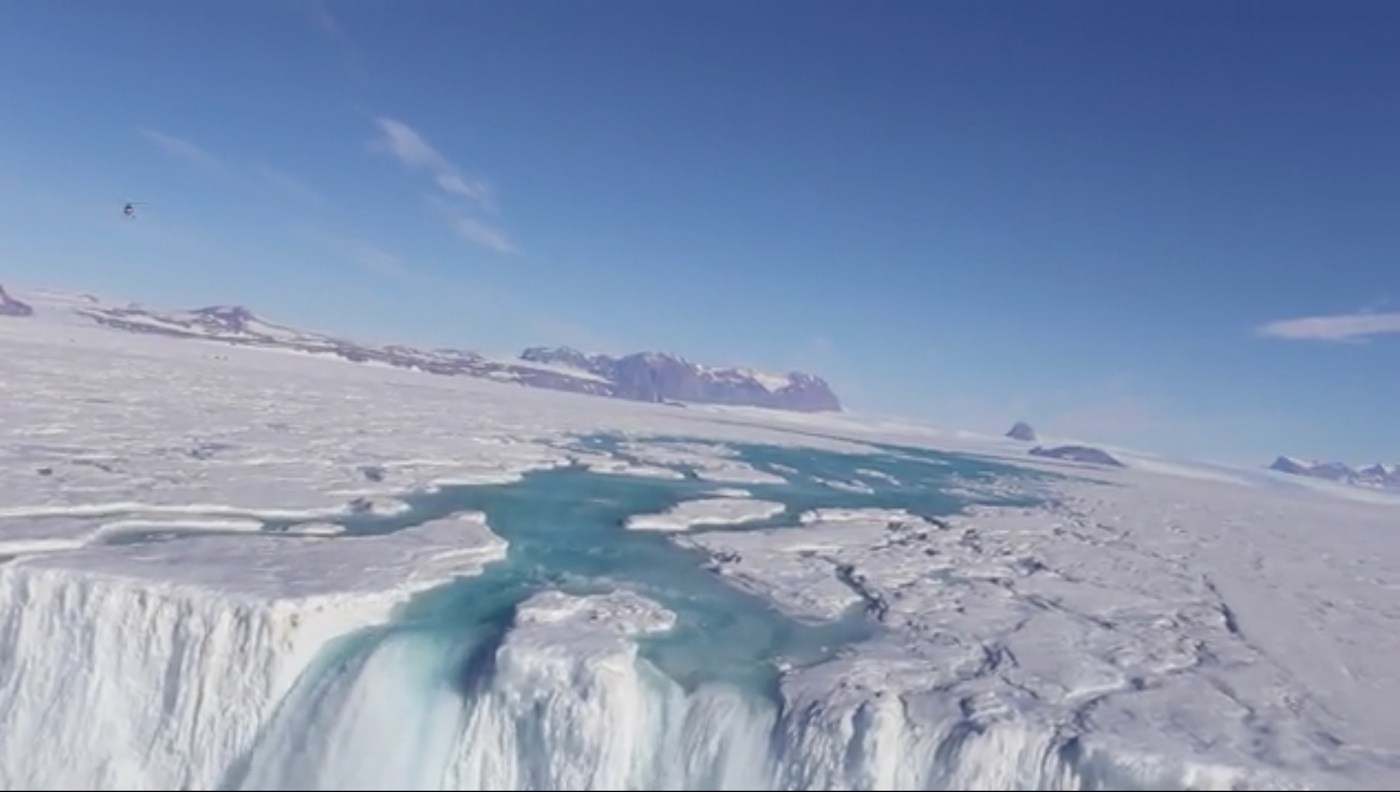
Huge swaths of Antarctica are awash in draining meltwater during the summer months, the first-ever continent-wide survey of meltwater shows.
Although past studies revealed that portions of Antarctica's Western Peninsula were melting at an alarming rate, most scientists believed the rest of the continent did not face extensive melting during Antarctica's ephemeral summer months.
"This is not in the future — this is widespread now, and has been for decades," lead author Jonathan Kingslake, a glaciologist at Columbia University's Lamont-Doherty Earth Observatory, said in a statement. "I think most polar scientists have considered water moving across the surface of Antarctica to be extremely rare. But we found a lot of it, over very large areas."
This new evidence of continent-wide meltwater during summer (the Northern Hemisphere's winter) suggests that the entire continent could be more vulnerable to small rises in temperature that are likely to be seen in the coming decades due to climate change. [Antarctica Photos: Meltwater Lake Hidden Beneath the Ice]
For the new survey, Kingslake and his colleagues went through historical catalogs of photos taken from military aircraft from 1947 onward, and from satellite imagery going as far back as 1973. The team found that a threaded network of 700 pools, ponds, channels, rivers and streams flowing across the ice fed outflows on all sides of the continent. Some of those flows are occurring at latitudes so far south that many scientists thought it was impossible for liquid water to flow there, the researchers reported today (April 19) in the journal Nature.
And the water network, in some cases, has existed for decades, they said. For instance, meltwater lakes emerged on East Antarctica's Roi Baudouin Ice Shelf in 1947. What's not clear from the data is whether icebound meltwater rivers have been growing since the photos were first taken.
"We have no reason to think they have," Kingslake said.
Sign up for the Live Science daily newsletter now
Get the world’s most fascinating discoveries delivered straight to your inbox.
Melting continent
Some of the watery region forms where punishing winds have removed the snow from the surface, exposing the darker ice below, the study found. Others seem to be forming near rocky mountain outcroppings that peek out from surrounding ice, they found. Because darker colors absorb more energy from the sun, it is easier for darker regions to cause melting in ice nearby. Once the ice melts, it causes further melting as the water flows over the top surface of the snow. For now, the meltwater probably isn't having a large permanent effect on Antarctic ice levels, as the water freezes once temperatures dip, the researchers said in the statement.
However, the current projections for warming will only make this process more pronounced, co-author Robin Bell, a Lamont-Doherty polar scientist, said in the statement.
"This study tells us there's already a lot more melting going on than we thought," Bell said. "When you turn up the temperature, it's only going to increase."
Right now, most of the melting is occurring at Antarctica's fringes. Floating ice shelves surrounding the continent lock inland glaciers in place, preventing them from sliding into the sea. As temperatures warm, more meltwater could pool beneath those floating ice shelves, which will also be constantly bathed in warmer ocean waters, the researchers said. Between 1995 and 2002, the Larsen Ice Shelf collapsed in part due to pooling water, Bell said. Once ice shelves disintegrate, inland glaciers may move toward the ocean more rapidly as well, which, in turn, could cause dramatic sea-level rise, the researchers said.
Originally published on Live Science.

Tia is the managing editor and was previously a senior writer for Live Science. Her work has appeared in Scientific American, Wired.com and other outlets. She holds a master's degree in bioengineering from the University of Washington, a graduate certificate in science writing from UC Santa Cruz and a bachelor's degree in mechanical engineering from the University of Texas at Austin. Tia was part of a team at the Milwaukee Journal Sentinel that published the Empty Cradles series on preterm births, which won multiple awards, including the 2012 Casey Medal for Meritorious Journalism.









